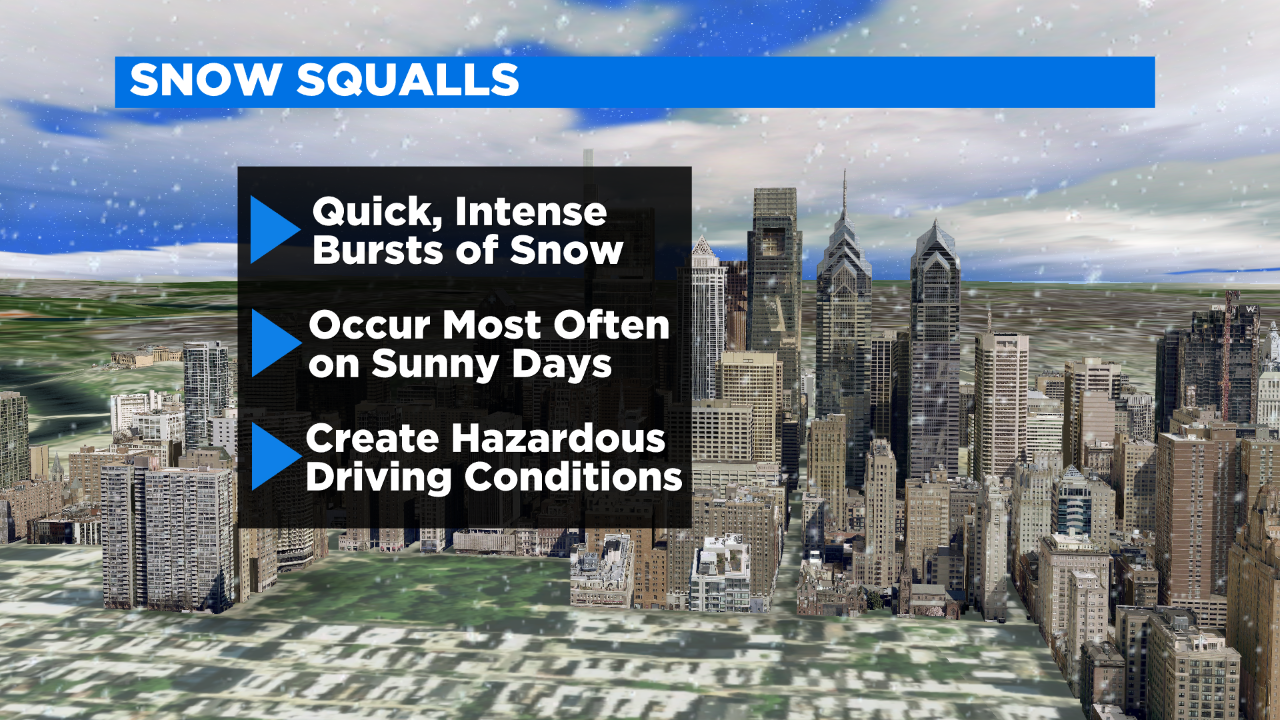Why Snow Squalls Pose Such a Danger to Drivers
PHILADELPHIA (CBS) -- Winter returned with a vengeance Monday with bitterly cold temperatures, wicked winds, and all-day rounds of snow squalls. Wind chills spent a number of hours in the teens in Philly Monday morning and peaked at a not-at-all-vernal 24 degrees this afternoon.
Our actual high temperature of 36 made for one of the coldest March 28ths on record, at only one degree shy of the coldest maximum temperature for Monday's date of 35 degrees set in 1877.
Scattered snow squalls impacted the area with multiple Snow Squall Warnings issued, including in Center City.
Earlier Monday in central Pennsylvania, a snow squall contributed to a deadly multi-car pileup involving 50 to 60 vehicles on Interstate 81 in Schuylkill County. Snow showers yield less than ideal conditions for travel, but snow squalls are potentially much more dangerous. But why? There are several contributing factors.
Firstly, snow squalls form in a similar fashion to summertime thunderstorms. They are convective in nature and develop most often on sunny days.
An inherent hazard to drivers resides with the observable conditions -- one moment it's sunny with perfect visibility, then nearly instantaneously, whiteout conditions occur with heavy, blowing snow and near-zero-visibility.
Snow squalls do not produce much accumulation, but it's just enough to slicken the roadways for drivers, and this is another reason that squalls pose such a significant threat to drivers.
Snow squalls in our region are lake-effect derived and driven into the Delaware Valley on strong north-westerly winds.
You can often see a snow squall approaching in the distance as the cloud is quite tall for a cold atmosphere, similar in appearance to an impending summertime thunderstorm, but with a slightly blurry look to the parent cloud.
The National Weather Service began issuing warnings for snow squalls in 2018, so be sure to have a way to receive warnings if squalls are in the forecast.
If enabled, your cell phone will automatically alert you if a Snow Squall Warning is issued for your county.
Snow squalls are brief in duration, lasting only about 10 to 20 minutes for any location, thus, be sure to avoid travel until the squall has passed or the warning expires. If a snow squall begins while you are driving, find a safe location to pull over as soon as possible until conditions clear.




